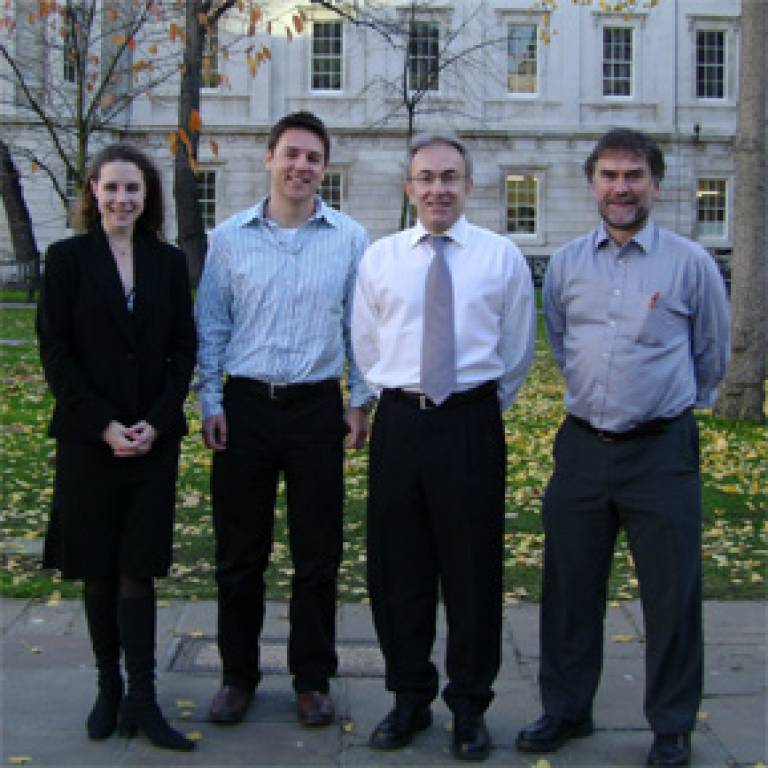£5 million grant for ultrasonic cancer treatment
26 November 2007
Links:
 mecheng.ucl.ac.uk/" target="_self">UCL Mechanical Engineering
mecheng.ucl.ac.uk/" target="_self">UCL Mechanical Engineering
Researchers at UCL Mechanical Engineering, working in conjunction with the UCL Centre for Medical Image Computing, the Institute of Cancer Research (ICR) and the University of Oxford, have been awarded £5 million from the Engineering & Physical Sciences Research Council to develop a new technique for using ultrasound to ablate upper abdominal cancers.
The UCL team, led by Dr Nader Saffari and Dr Eleanor Stride (Mechanical Engineering), Professor David Hawkes and Dr Dean Barratt (UCL Centre for Medical Image Computing), will work with Professor Gail ter Haar from ICR and Dr Constantin Coussios of the University of Oxford.
More than 20,000 people are diagnosed with upper abdominal cancer a year in the UK, of which more than half die. The new treatment could offer an alternative to chemotherapy and surgery, which for abdominal cancer is often either not possible or offers poor outcomes.
The intention of high intensity focussed ultrasound (HIFU) treatment is to direct energy very accurately at tumours of the liver, kidney and pancreas. The danger in most ablative treatments, however, where tumour cells are destroyed by raising their temperature, is that surrounding healthy tissue can be damaged. Using HIFU, the energy can be focused into a very small and well defined volume, reducing the risk of harmful side effects.
The technique works by raising the temperature of an area of cancerous tissue above 55 degrees Celsius for 1 second, which immediately kills the cells. However, there are several obstacles to overcome before this technique can be safely and routinely used inside the body. For example, the treatment will need to transmit energy through the rib cage, which could increase the risk of skin burns and damage to the rib surface. Similarly, since the patient will be breathing, the effects of movement on the accuracy of the treatment need to be explored. Cavitation may occur as a result of the treatment, and these effects need to be fully considered. Finally, there is currently no effective technique for real-time image guidance and treatment monitoring, which will be required if the technique is to be applied successfully.
To tackle these issues, the different partners in the project will each bring their own particular expertise. UCL Mechanical Engineering will develop patient-specific treatment planning software whilst analysing and correcting for organ motion is a specialisation of the UCL Centre for Medical Image Computing. The unit at the University of Oxford, will develop methods for real-time monitoring in close collaboration with the team at the Institute for Cancer Research, that have expertise in developing and testing HIFU systems and conducting clinical trials. The obvious requirement for tailoring to an individual patient's physical geometry means that the team will need to develop sophisticated software that allows treatments to be planned for each patient.
The overall objective of the research programme is to develop practical solutions for these issues. Dr Saffari said: 'It is hoped that at the end of this five year project we will have a prototype system ready for clinical trials'.
To find out more, follow the links at the top of this article.
Image: from left to right - Dr Eleanor Stride, Dr Dean Barratt, Dr Nader Saffari and Professor Dave Hawkes
 Close
Close

